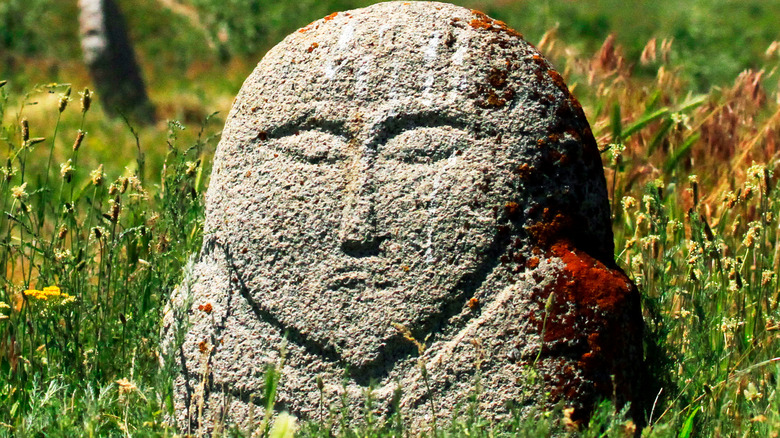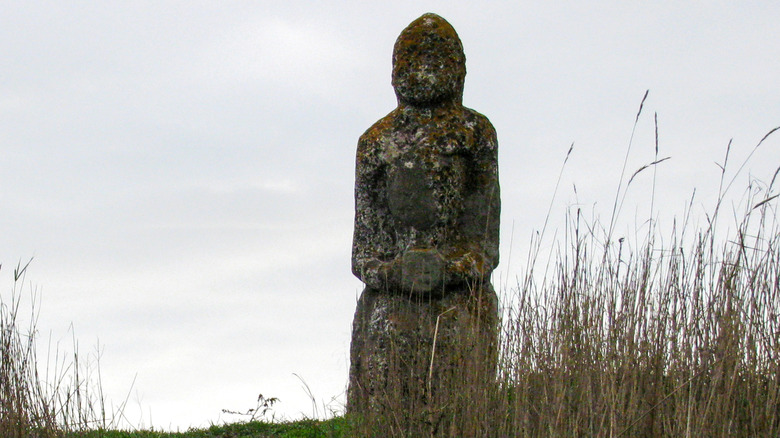How A Potato Farmer Found A 6th Century Memorial Statue
Sometimes, the most miraculous things happen in the most unmiraculous of situations. All it takes for your life to change is to go about your daily routine expecting nothing out of the ordinary to happen. Sure, most of us have seen "Field of Dreams" (1989) enough times to be charmed by the prospect of one's life being turned upside down in the most magical of ways, but you're probably not likely to encounter a cornfield teeming with the spirits of dead baseball players any time soon.
However, one remarkably happy accident befell Erkin Turbaev on October 15, 2022 while he was tending his potato farm. According to Ancient Origins, Turbaev — who resides in Eastern Kyrgyzstan — was performing his normal duties when his plough collided with something beneath the soil. Puzzled, he investigated the strange object that was inconveniencing his work and discovered something amazing staring up at him.
Erkin Turbaev and the Balbal statue
The 60-year-old farmer, who leases some 80 acres of land upon which he cultivates potatoes, broke the front of his plough on a massive stone object that turned out to be an ancient Balbal statue dating all the way back to the 6th century (per Arkeonews). He took to the soil and started to exhume what he could, later discovering that the massive monument was no less than 10 feet tall and astonishingly heavy (via Ancient Origins).
Turbaev told the press that the statue was "a great historical find for this village" and that it would undoubtedly "bring good fortune." However, according to Arkeonews, it wasn't the first time a Balbal statue has been discovered in that particular region of Kyrgyzstan. While stumbling upon one isn't what you'd consider "common" in the traditional sense, Balbal statues are native to the area and were erected by ancient populations who occupied it centuries ago.
The history of Balbal statues
Balbal (derived from the Turkic word "Bulbul" which means "ancestor") statues, as Central Asia Guide reports, have historically been traced back to several different locations in Asia and Central/Eastern Europe. Central Asia, Turkey, Siberia, Ukraine, and Russia are among those regions where the monuments have been uncovered by archeologists. They're essentially large stone statues that shaped like human bodies. They also have faces carved into them, though the features are slightly exaggerated for aesthetic effect (per Ancient Origins).
According to Ancient Origins, Balbal statues were erected and put in place by nomadic persons as homages to the dead. They're basically massive headstones, though bodies weren't always placed alongside the statues as funeral customs varied amongst nomadic tribes. They are some of the ancient world's most enduring and fascinating relics, and — as we now know — you just might stumble upon one while you're out farming potatoes in Kyrgyzstan.


